Champions of Change Blog
Champions of Change are Rebuilding America
Posted by on February 16, 2012 at 12:52 PM EDTThe work we do in government cannot be done without our partners. Whether we're investing in safety, road repair, or regional transit solutions, the team using those funds must be responsible and innovative to ensure we get the most bang for our buck. And when those funds are designed to help stimulate a flagging economy--as the American Recovery and Reinvestment Act intended--getting the most from our investments is even more critical.
Throughout our ARRA grant making activity, DOT has been very fortunate to have the kind of capable partners these important investments demanded. And I'm pleased that, yesterday, the White House honored several of them as Champions of Change.
These leaders are creating jobs in their communities and using innovative techniques to develop valuable projects to improve America’s infrastructure, build roads and bridges, expand high-speed broadband, provide clean water and energy, and much more.
With the assistance of grants and loans from the Obama Administration's American Recovery and Reinvestment Act, the transportation leaders I met yesterday have delivered tremendous benefits to their communities:
- Justin Augustine is Chief Executive Officer of the Regional Transit Authority in New Orleans, which is currently engaged in the Loyola Avenue streetcar expansion.
- Dr. Jana Davis is Associate Executive Director and Chief Scientist of the Chesapeake Bay Trust. The Trust has advocated effectively for a Green Streets approach to managing storm water runoff.
- Paulson Chaco is Director of the Navajo Division of Transportation occupying a cabinet level position to the President of the Navajo Nation. He is responsible for 18,000 miles of roadway, 15,000 of which are unpaved and very susceptible to weather conditions.
- Henry Perahia is Chief Bridge Officer of the New York City Department of Transportation. He manages 787 city-owned bridges and tunnels.
- Sam E. Swan is Project Manager for the DFW Connector Project; this project has used an innovative design-build approach to unsnarl a complex tangle of traffic coming and going from the nation's eighth busiest airport.
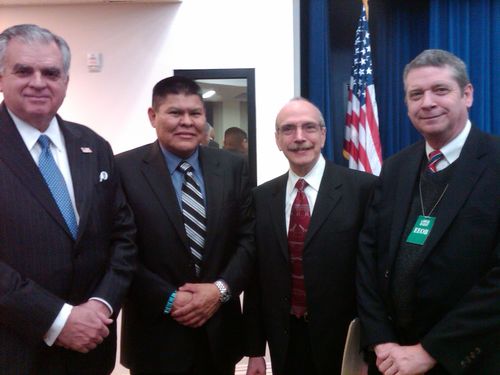
With Paulson Chaco, Henry Perahia, and Sam SwanEach of them has written on whitehouse.gov about the changes they worked so hard to achieve, and I encourage you to read about their terrific projects. The challenge will be figuring out where to jump in.
Now, as much as we need good partners to get the biggest bang for our buck, without the Obama Administration's ARRA investments, there wouldn't have been any bang at all.
The budget the President proposed this week will ensure that federal investments in transportation continue in a predictable way for the next six years. The certainty offered by a long-term bill is precisely what America's transportation leaders--like the Champions of Change I met yesterday--need to plan confidently for tomorrow's infrastructure and begin putting our friends and neighbors back to work today.
Ray LaHood is the US Secretary of Transportation.
Rebuilding a Network, Redefining a Community
Posted by on February 15, 2012 at 2:30 PM EDT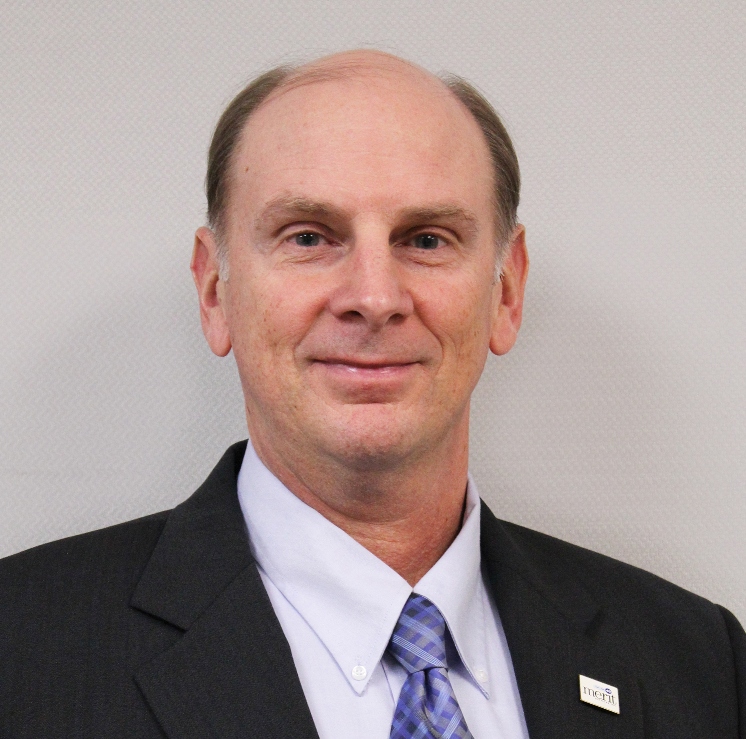
Leaders are often bestowed awards to honor the efforts and success of the organizations they lead. Today, I accept the recognition of Champion of Change for all of the dedicated staff at Merit Network who have been hard at work for the past two years to ensure that Michigan will have the necessary cyber infrastructure to thrive in the 21st century.
When I joined Merit as President and CEO in 2006, I joined an organization with a great lineage as the longest-running Research and Education Network in America. From our humble beginnings in 1966 as a vehicle to exchange research data between Michigan’s major universities, to our pioneering role implementing and managing the NSFNET in the late 1980s, the precursor to the modern Internet you and I know today, Merit has made significant contributions to Internet networking in America. And over time, Merit Network has grown into a membership organization, serving the advanced networking needs of community anchor institutions (higher education, schools, libraries, health care, public safety and government) across Michigan.
Early in my tenure at Merit, it became clear there were many Merit Member’s in rural and remote regions of the state that were underserved with regard to Internet resources. In serving these Members, Merit took on a challenge that did not exist in other more populated, metropolitan regions of the state. This was largely due to a lack of backhaul infrastructure in these areas. The fact that so many of our Member organizations and community anchors throughout the state faced challenges obtaining adequate service, helped Merit formulate a vision for a brighter future for Michigan.
Recovery Reaches Rural Coverage Areas
Posted by on February 15, 2012 at 2:30 PM EDT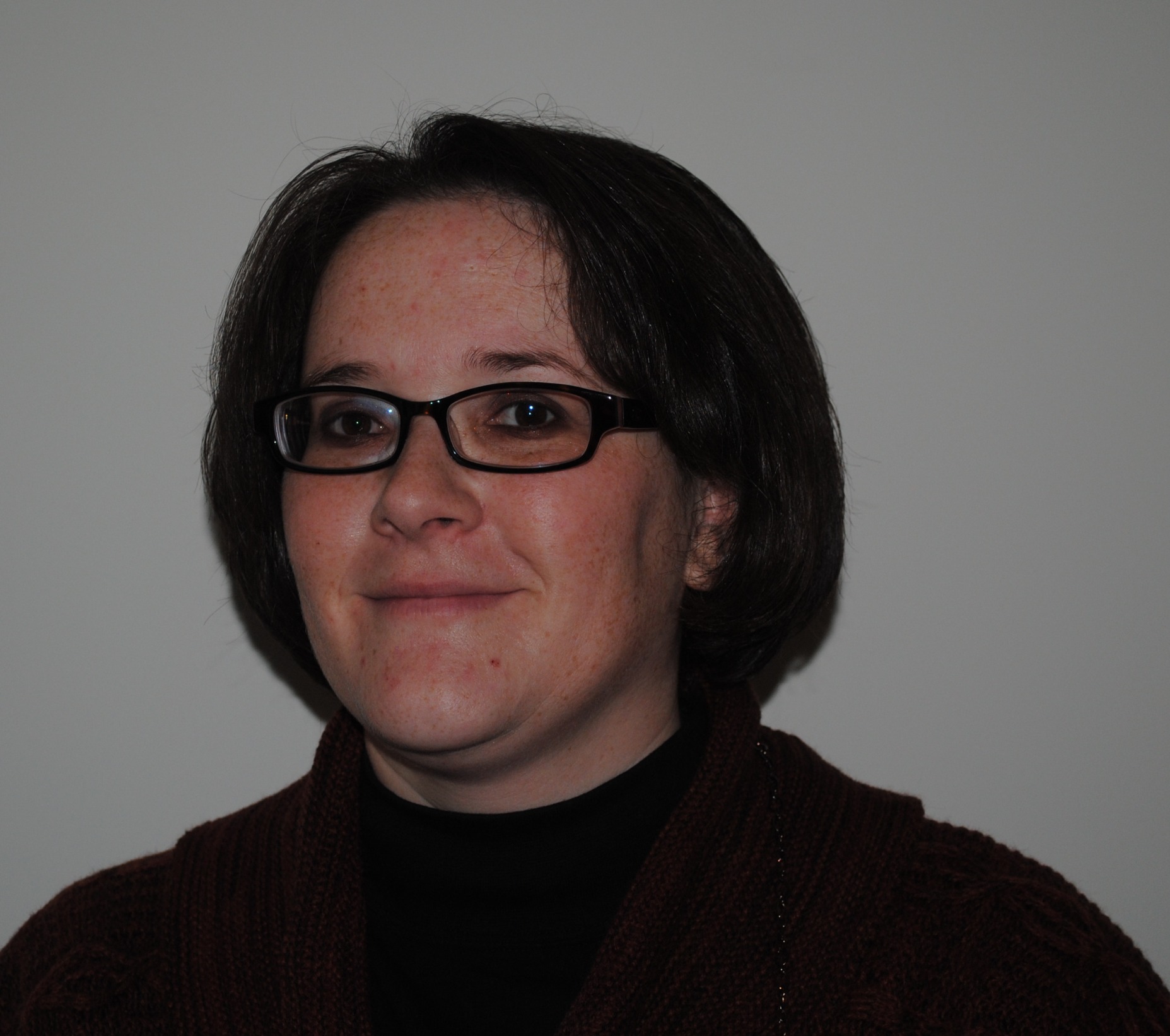
Affordable broadband access. What seems like an absolute to many Americans is in fact something that countless communities around the country struggle to obtain. In an era when high-speed data connectivity is essential, it is unimaginable that entire localities are without access to that lifeline or lack competitive, affordable options.
When the Broadband Incentives Program (BIP) was created under the American Reinvestment and Recovery Act of 2009, nTelos Wireless took the opportunity to apply for funding to upgrade portions of our network to 3G Evolution Data Optimized (EVDO) Rev A service. nTelos Wireless already provided high-speed mobile broadband in the majority of its service area. However, there are portions of our footprint that have not been upgraded from traditional 1X or 2G data speeds to 3G service. Those areas are in rural markets that are not economically feasible to upgrade to 3G service. 2G service, while functional, limits the customer to basic Internet browsing both on handsets and data cards used in laptop computers. File transfers and the audio/video streaming experience for these customers is poor and often impossible. With EVDO Rev A service, the speeds allow a full suite of Internet options previously reserved for wireline platforms. EVDO Rev A supports peak data rates of up to 3.1 Mbps in the forward link and 1.8 Mbps in the reverse link bringing mobile broadband to the subscriber’s phone or laptop. In addition, the portability of the service is an enormous advantage when compared to traditional wireline products.
Regional Transit Authority Transportation Investments Generate Economic Growth
Posted by on February 15, 2012 at 2:30 PM EDT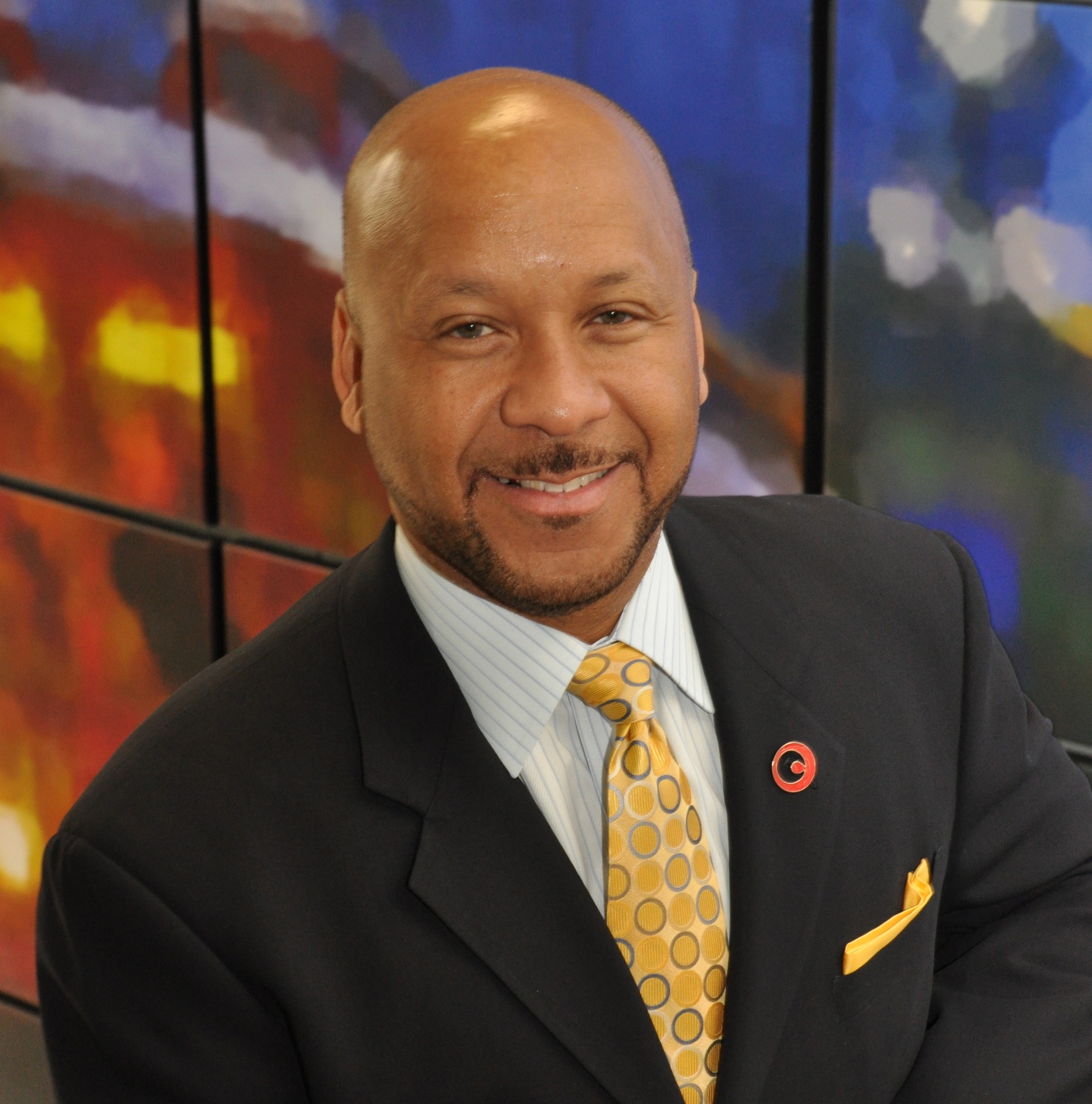
The City of New Orleans was devastated by Hurricane Katrina. To assist the City in its recovery efforts, I quickly realized that Transportation would have to play a pivotal role: 1) We would have to restore transportation to the community; and 2) Use transportation as an economic catalyst. The economic catalyst would be the creation of a new streetcar line along Loyola Avenue. Loyola Avenue would serve as a connector to the existing streetcar lines serving the historic French Quarter, the Central Business District and in the future the Union Passenger Terminal. The terminal would become the City’s intermodal transfer point connecting Rail, Bus and Taxi services. The $45 million dollar streetcar investment has attracted new investment along Loyola Avenue. This 1.6 mile project is leveraging transportation investments to help grow a new strong, livable neighborhood called South Market District.
The Domain Companies' $185M South Market District mixed-use development is to be sited on Loyola Avenue in direct response to the construction of the streetcar lines: "What we felt made this site ideal was the streetcar expansion," observed Domain Companies Co-principal Matt Schwartz in a 2010 interview, "The most exciting development opportunities are really converging on this area." The South Market District will consist of 500 new apartments and 125,000 square feet of retail and restaurants.
The streetcar project is turning block after block of bleak, asphalt-savanna surface parking into a livable community. Bring in transit and builders of higher-density residential and retail will follow. In total, recently completed and proposed downtown development projects (2005 to 2015) announced as of September, 2010 will add an estimated 2,314 new housing units, 2,381 new hotel rooms, and more than 390,000 sf of retail space to the downtown area, at an estimated total private investment figure of $2.7 billion. More than $1.3 billion of the investment is or will be located within three blocks of the Loyola Avenue streetcar corridor. At least $185M of Loyola Avenue investment is directly attributable to streetcar expansion.
Roads and Transportation on the Navajo Nation
Posted by on February 15, 2012 at 2:30 PM EDT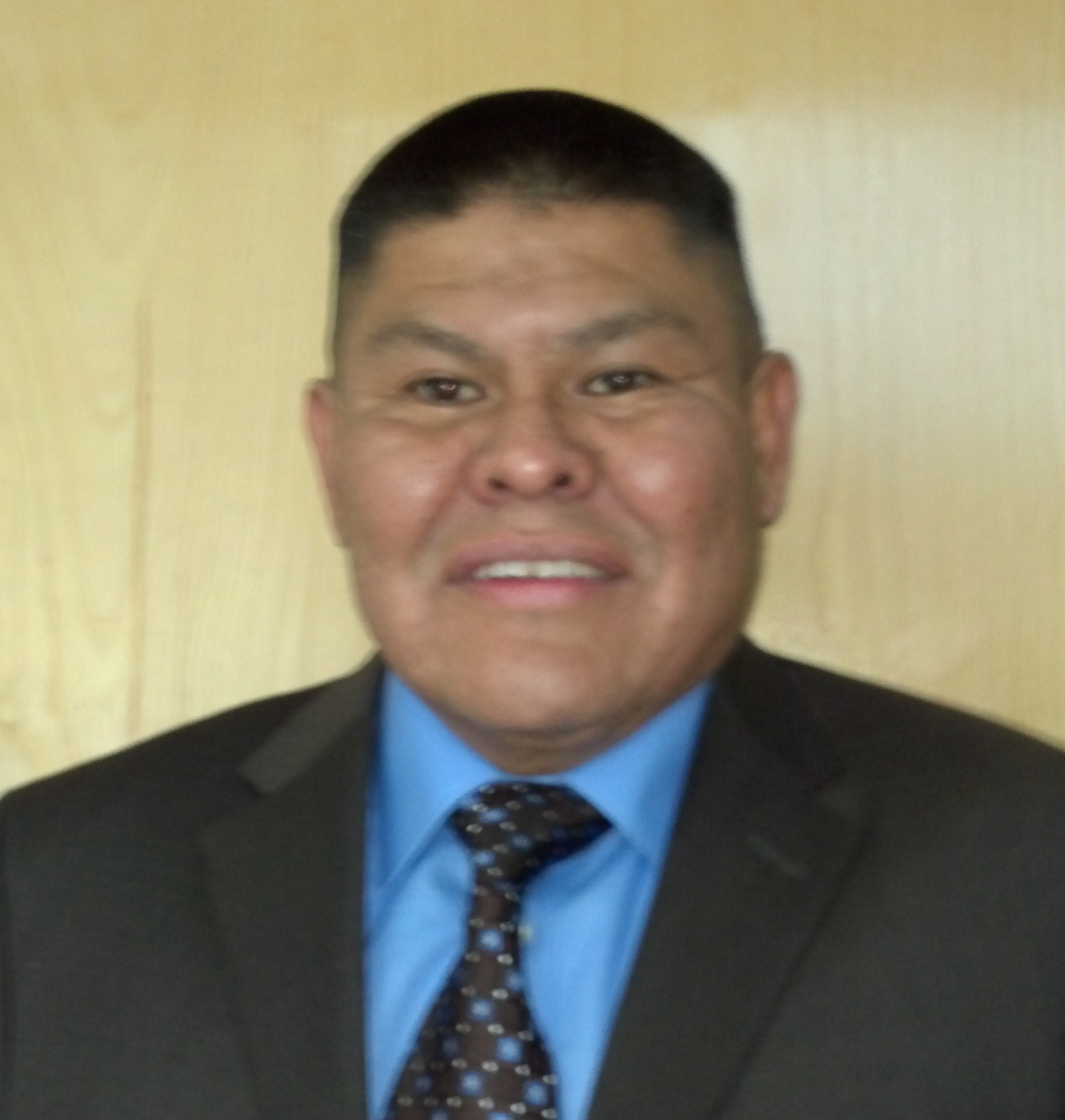
I’m a member of the Navajo Nation, the largest Native American Tribe in the U.S. We live in parts of New Mexico, Arizona, and Utah on land we have occupied since the beginning of our time on this continent. Our land area is over 27,000 acres with a population exceeding 250,000. Elevations in parts of our land range from 4,000 feet to over 12,000 feet encompassing high deserts with sparse vegetation to land heavily forested with Ponderosa pine. We experience drought, heavy rainfall and abundant snowfall. Most of our people still live in isolated rural areas where generations of their relatives lived on land connected to their history, customs and traditions.
The Navajo Nation has over 18,000 miles of roads; over 15,000 of those miles are not paved yet provide the only means for children and families to get to schools, hospitals and markets. Most Navajo households are located miles from paved roads which are accessible only by dirt roads which are highly susceptible to damage from heavy snows, floods, and washouts making roads useless for travel and pose risks for school buses and families; sometimes people are stranded for days at home unable to drive out to major roads.
I am appointed by the President of the Navajo Nation to guide of the Navajo Division Transportation. I provided the foregoing snapshot of our land and people as a backdrop to my message on the roads and transportation challenges we face, and, the absolute need for cooperation and sharing among people and organizations to improve life on the reservation.
Needless to say, paved roads are highly valued for dependable, safe travel in most weather conditions. Many of our families have had to move closer to paved State, County and B.I.A. roads for convenience and safety. U.S. Highway 491 is one such road which connects with Inter-state 40 in Gallup, New Mexico, and runs north through the Navajo Nation into Colorado. The route was named Highway 666 before it was renamed due to people’s discomfort with the numbers “666”and the bad omens associated with it. The concern was very real due to the historically high number of vehicle crashes and fatalities on the route. Highway 491 was always a two lane road not sufficiently designed and constructed to handle the heavy traffic assigned to it. Trucks of every description exiting Inter-State 40 use it to haul homes, hazardous material, and everything in between competing with school buses and families which share the highway along the corridor. A general public outcry for a safer four lane highway, with a median separating north and southbound traffic had been heard for years. Funding for re-construction of the highway was not available despite repeated attempts to find funding. In the meantime Highway 491 maintained its reputation as an unsafe, bad road.
Solving the Aquifer Dilemma: Turning Waste into Water
Posted by on February 15, 2012 at 2:30 PM EDT
I am always disappointed by the argument that we must compromise our concerns for the environment when jobs may be adversely affected. I am the mayor of a small city in Louisiana where an underground aquifer (Sparta aquifer) serves as the major source of fresh water for our community and for all or part of 14 additional parishes (counties) in our state. An extensive engineering study published in 2001 documented the danger that the Sparta aquifer had a much larger daily drawdown than its recharge capability, resulting in rapidly declining levels in our water wells. The largest single user of water from the aquifer is a paper mill that is also our largest provider of high-paying manufacturing jobs. Faced with the threat of irreparable damage to this precious natural resource, we began a search for a solution to the problem, a solution that would preserve the aquifer and also protect those essential jobs.
Although the engineering study of the aquifer offered a variety of suggested solutions, none were within the financial capability of our community. We took an approach not mentioned in the study. We began a search for an acceptable alternative source of water to meet the mill’s needs. Because the product produced by the mill came in contact with food, the alternative water had to meet EPA primary and secondary drinking water standards.
- &lsaquo previous
- …
- 132
- 133
- 134
- 135
- 136
- 137
- 138
- 139
- 140
- …
- next &rsaquo
White House Blogs
- The White House Blog
- Middle Class Task Force
- Council of Economic Advisers
- Council on Environmental Quality
- Council on Women and Girls
- Office of Intergovernmental Affairs
- Office of Management and Budget
- Office of Public Engagement
- Office of Science & Tech Policy
- Office of Urban Affairs
- Open Government
- Faith and Neighborhood Partnerships
- Social Innovation and Civic Participation
- US Trade Representative
- Office National Drug Control Policy
categories
- AIDS Policy
- Alaska
- Blueprint for an America Built to Last
- Budget
- Civil Rights
- Defense
- Disabilities
- Economy
- Education
- Energy and Environment
- Equal Pay
- Ethics
- Faith Based
- Fiscal Responsibility
- Foreign Policy
- Grab Bag
- Health Care
- Homeland Security
- Immigration
- Innovation Fellows
- Inside the White House
- Middle Class Security
- Open Government
- Poverty
- Rural
- Seniors and Social Security
- Service
- Social Innovation
- State of the Union
- Taxes
- Technology
- Urban Policy
- Veterans
- Violence Prevention
- White House Internships
- Women
- Working Families
- Additional Issues

